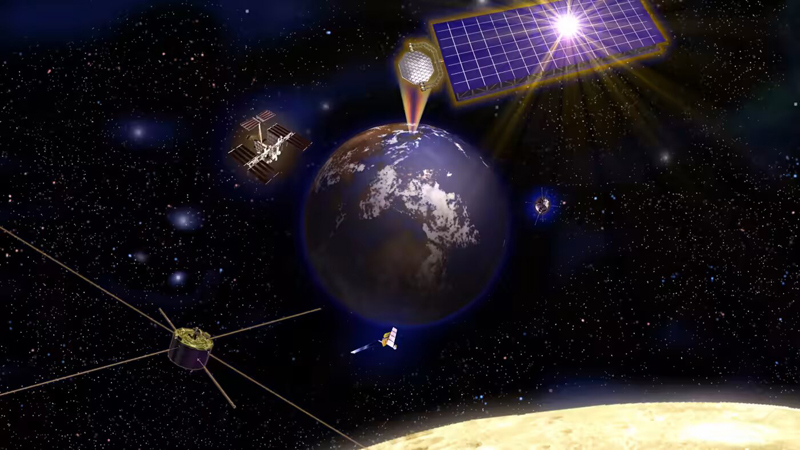
[ad_1]
New global race for solar energy from space
A group of scientists and businessmen intends to prove the possibility of transmitting energy from orbiting satellites to Earth.
In the world a new race is on behind the development of technology for the transfer of solar energy collected in space to Earth. The Japan Public-Private Partnership plans to conduct a trial in 2025.
The concept of space solar energy was proposed by an American physicist in 1968. Its essence lies in the fact that solar panels are launched into space to an altitude of 36,000 kilometers and generate electricity.
Solar energy is converted into microwaves – the same electromagnetic radiation used in microwave ovens – and sent to ground receiving stations to be converted into electrical energy.

Microwaves can pass through clouds, providing a stable power supply regardless of the time of day or the weather.
In Japan, research in this area is led by the former president of Kyoto University, Hiroshi Matsumoto. In the 1980s, his group was the first in the world to successfully transfer energy via microwaves in space.
Research continued under the guidance of Kyoto University professor Naoki Shinohara, and in 2009 the group used an airship to transmit power from a height of 30 meters to a mobile phone on the ground. It is working to improve core technologies for wireless power delivery.
The project involving representatives of industry, government and science under the leadership of the Ministry of Economy, Trade and Industry began in 2009 with Shinohara at the head of the technical committee.
He successfully conducted experiments to transmit microwave energy horizontally in 2015 and vertically in 2018, both at a distance of 50 meters. In the future, it is planned to try to transmit energy over distances from 1 to 5 kilometers.
Shinohara looks even further. “If we can demonstrate our technology before other countries, it will also be a tool for negotiations on space development with other countries,” he said.
The group is planning an experiment around fiscal 2025 to see if energy can be transferred from space to earth. For this, small satellites will be used, which will send energy to ground receiving stations from a distance of hundreds of kilometers.
Competitors are also moving towards commercialization. The US Air Force Research Laboratory and the California Institute of Technology conduct each of their large-scale projects. Parties such as Chongqing University are developing the technology in China, and the European Space Agency is developing its plans.
Energy crises have historically often led to increased interest in space solar energy. NASA and the US Department of Energy considered it during the oil shock decade of the 1970s, although the idea fell out of favor as the crisis atmosphere subsided. NASA revived its efforts in 2000 when the Kyoto Protocol on Climate Change raised global awareness of environmental issues. The Japan Aerospace Research Agency also joined them.
Space solar power has received a new boost in recent years as more governments and companies set goals for zero carbon emissions.
But cost remains a major hurdle. To generate about 1 gigawatt – the equivalent of one nuclear reactor – space solar energy will require panels equal in area to a square with a side of 2 kilometers. Even with technological advances, installing this amount of power would likely cost more than 1 trillion yen ($7.1 billion).
[ad_2]
Source link
www.securitylab.ru